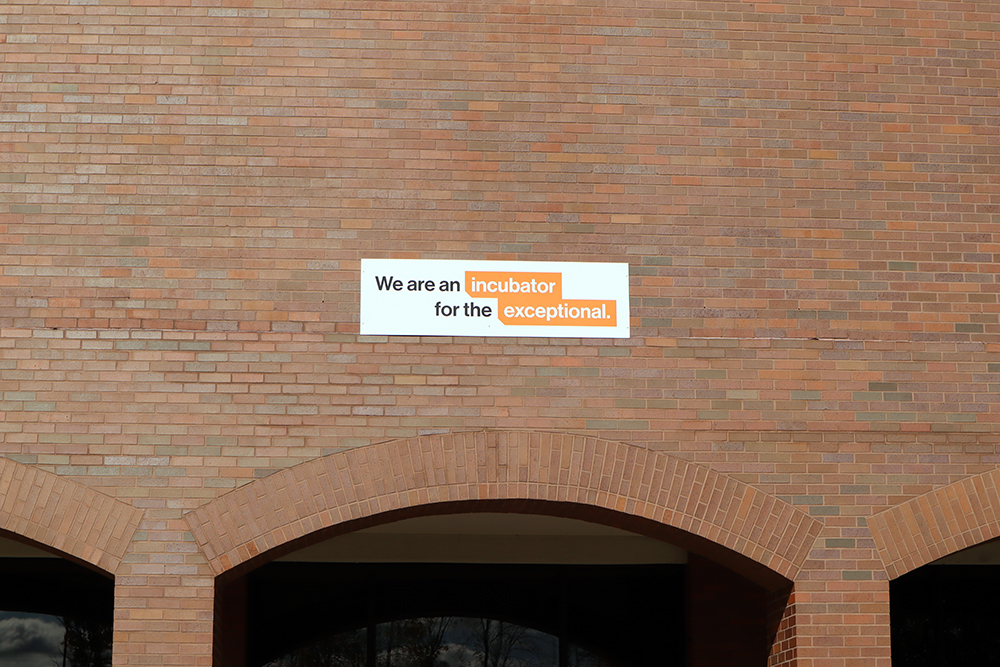The Hits and Misses of RIT's Branding
by Kasey Mathews | published Feb. 24th, 2020
An organization’s brand is its identity — a reflection of its personality and the manner in which consumers expect that organization to express itself. The brand extends far beyond a logo and into the visual imagery of its media, identifiers of its vision and even the language of its communications and content.
RIT launched a new marketing and branding initiative nearly a year ago that tackled the issues of dissonant branding that had existed before. The launch included a centralization of RIT’s image and solidified its brand personality through several changes to the university. Much of this can be seen on RIT’s new brand portal.
Looking at the changes made a year later, it’s time to analyze how these decisions have fared.
Color Swap
One of the most noticeable changes to RIT’s brand was the official abandonment of brown as a primary university color. According to Kin Sejpal, associate vice president of University Marketing Strategy and Creative Services, administrators knew for a while that the various colleges and departments shunned the color brown in their marketing, viewing it as an unappealing tone.
Sejpal and her team understood this and decided it was time to retire brown from RIT’s main color wheel. However, this also meant another color had to take its place — one that meshed well with the orange that had become synonymous with RIT’s Tigers. Luckily, the athletics department was already using black to a large degree and having taken a look at that, the team felt that it would be a logical next step to adopt black, university-wide.
Whereas the brown-to-black switch is certainly the most easily observable change to the university colors, there were several other, smaller alterations that many may have not noticed. The “RIT orange” for example, shifted from a brighter hue into a deeper one; the goal was for it to appear vivid and recognizable across multiple media in print (both matte and gloss) and online.
White was also added as a primary color. Sejpal explained that this was to make a concerted effort to remind designers to leave white space, as it is an important piece in every design.
Finally, accent colors were established. These colors were to be used sparingly to further draw the eye of audiences without clouding the predominance of the orange-white-black combinations that should “drive most materials,” according to the brand portal.
With these new colors, RIT has become far more concise with its branding and through color scheme alone, one can often recognize RIT-produced media and distinguish it from the noise around it.
Let’s Talk Dots
Another of the more easily noticeable aspects of the launch was a redesigned logo for RIT. With the dots thrown to the wayside, the logo has taken on a more modern look. Many within RIT’s community have hassled the university for this decision, including a Distorter article poking fun at the issue.
People seem to be protective of the dots, viewing their abandonment as a personal attack. Having lived through both the dot and post-dot eras of RIT, I can certainly say no one ever seemed to pay those dots any mind while they were around. Why all the fuss now?
The dots looked great when the logo was large — that much I’ll admit — but as soon as the logo was shrunk down, the dots just didn’t have the same appeal. The dots in the logo would simply disappear or be so small that they seemed like just smudges on the screen. In their wake would be awkwardly spaced letters comprising an oddly stretched out logo. Without the dots, this issue is gone and we can appear more modern.
Other Logos
Additionally to the university’s updated logo, all university entities also were expected to update their logos to appear more uniform with their imagery. Before this push, every department, college and center had their own logo. While many reflected their affiliation with RIT, some did not. There were logos that were entirely devoid of the RIT orange and others with no mention of RIT.
Associate Vice President of University Communications Bob Finnerty gave the example of an unnamed center at RIT to justify the need to standardize these logos.
“I remember having a discussion with a director of a center. They had their annual report and they were going to a major conference in San Francisco, dealing with Silicon Valley folks,” Finnerty said. “It [the report] was all about their center; there was no mention of RIT. They had their [center’s] logo and their annual report was out there with Stanford’s, UC Berkeley’s — you name it, all the big boys out on the west coast. ‘The Center of XYZ,’ it means nothing whereas you have to put [the RIT logo] out there in front.”
This was no direct fault of the center, rather RIT should have known better than to allow logos of subsidiary departments to not feature the parent brand. By standardizing these logos, it’s true that many departments lost logos that were very visually appealing; however, logos like that shouldn’t have existed in the first place.
That Damned Smile
Other imagery that came out alongside the new logos were the introduction of spirit marks. Across RIT, tiger imagery was commonplace; however, the tiger itself was anything but consistent. On some logos, the tiger was cartoonized. Others seemed a little more basic. These spirit marks intended to set the standard for this imagery.
Originally, there were three tigers. The first, largely adopted from athletics in a similar fashion to our new color scheme, featured a roaring tiger. This served as our athletic tiger. The second, a tiger with a straight face, was our academic tiger. The third, largely dubbed the “smiling tiger,” was to serve as our spirit tiger.
The spirit tiger was intended to be softer so as to not intimidate or ward off any who saw it. It was to be a friendlier image. However, as Professor of Graphic Design Patti Lachance stated in this Reporter article from last year, “I understand the rationale, but it’s a tiger. They were born to be fierce.”
I have to agree. A mascot doesn't need to be welcoming — rather, it should be a rallying point that all students and community members can take pride in. A smiling cereal-box-esque tiger is certainly not that.
RIT’s marketing team caught on to the disapproval of the spirit and, to a lesser degree, academic tigers. As pointed out by Reddit user reallynothingmuch, all traces of these two tigers have disappeared from the brand portal.
This was done rather quietly, as opposed to the other aspects of the brand launch. Chief Marketing Officer John Trierweiler noted that this change was communicated in largely internal channels and newsletters. However, he also acknowledged that students don’t typically tune into these channels and were therefore left out of the loop — an oversight he looks to prevent in the future.
Template Troubles
Along with the new brand guidelines comes a stricter look at the ways various RIT colleges and departments advertise events. Through flyers, posters, brochures, pamphlets, notecards, Facebook events, Instagram posts and more, these advertisements are expected to garner attention from the RIT community while adhering to branding guidelines.
To help with this seemingly daunting task, RIT has released many templates on its brand portal. The templates look great and are hugely customizable. However, all-too-often we see graphics for entirely different events that look nearly identical to one another. By encouraging use of these templates, those making these graphics often simply plug images and text wherever needed without stopping to customize the design.
This isn’t entirely the fault of the marketing team. Much of the responsibility falls on those that are designing advertisements for these events. It’s up to them to ensure these ads are attention-grabbing. However, the marketing team could certainly help with this. They could provide more templates to use — gradually develop a library of templates, each following brand guidelines, but distinct from one another in tone and appearance.
Watch Your Language
The final major piece of the rebrand is in the language itself. What tone are content creators using? Which stories are they focusing on?
Since the branding launch, RIT has shifted its language to be future-focused. It’s never “This is what we’ve done.” Rather it’s “This is one step in the journey.”
Spearheading this is the “On to something” verbiage that serves as the central heartbeat to the messages the university is communicating.
The blueprints are there for innovative and future-focused language. While RIT could take a dynamic lead on its marketing messages, content creators instead seem to take the easier route, writing "on to something amazing" or "on to something incredible" verbatim. They choose to make the obvious connections between the stories they are telling and the brand they are reinforcing.
Hit or Miss? It's a Mixed Bag
Overall, the launch of RIT’s new brand was the beginning of a new era around campus, much of it for the better. However, more focus needs to be had on how to implement this brand without following a strict roadmap. How do content creators abstract this desired message into more of a feeling? How do they create the desired effect without the obviousness of the brand behind it?
In order to truly push the brand forward, RIT needs to educate its content creators, whether they be copywriters, designers or managers, on how to embody the brand without aggressively pushing the brand. The more these creators simply drag-and-drop onto templates, the less effective the brand becomes.
In marketing, there is a growing trend of “Show, Don’t Tell.” Even in this modernization of RIT’s brand, it still falls behind in this aspect. Gone are the days of being able to say, “We are innovative,” and people taking it at face value. Audiences don’t want to be told what to think — they want to be shown. It’s time RIT shows us.





